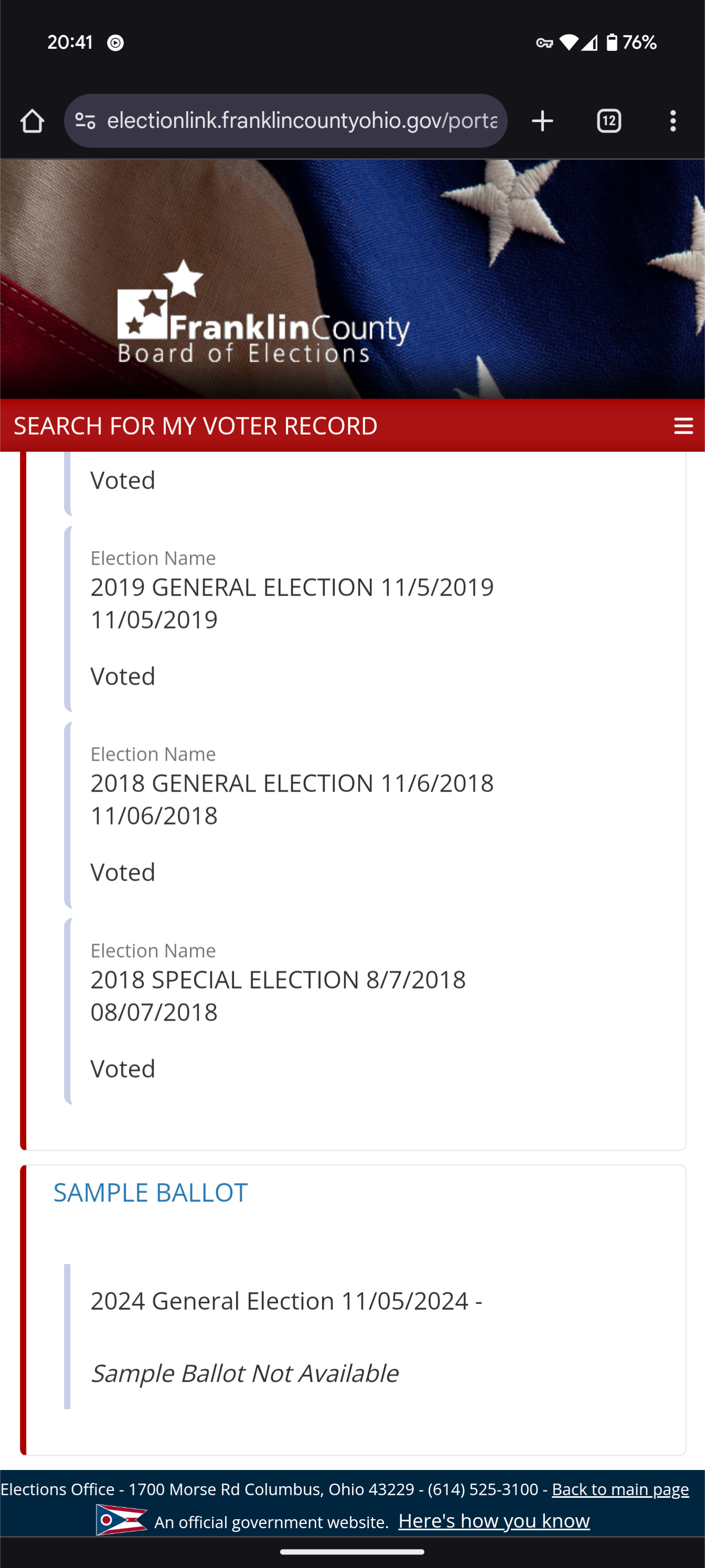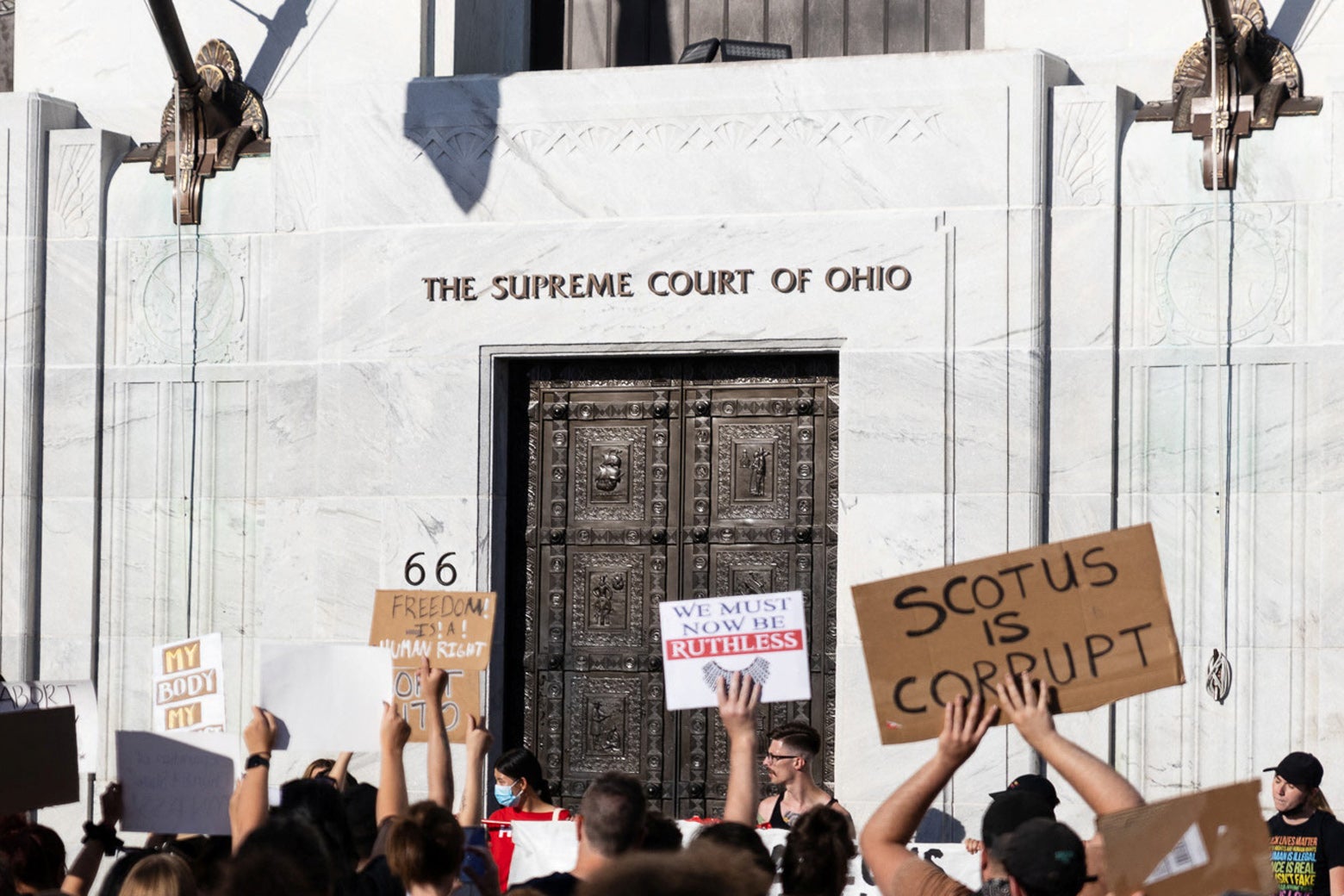In November, Ohio residents will have an opportunity to vote on Issue 1, a constitutional amendment that would finally abolish the state’s extreme partisan gerrymandering. Voters will not, however, be informed of this fact on the ballot. Instead, the Ohio Supreme Court’s Republican majority ruled Monday that the amendment will be described in egregiously misleading terms on the ballot itself, with ultra-biased language designed to turn citizens against it. Incredibly, a proposal that would end gerrymandering will be framed as a proposal to require gerrymandering, a patently false representation of its intent and effect. The court’s 4–3 decision marks yet another effort to subvert democracy in Ohio by Republicans who fear that the citizenry—when given a voice on the matter—might dare to loosen their stranglehold on power.
https://slate.com/news-and-politics/2024/09/ohio-supreme-court-voter-fraud-gop.html
FFS. Ohio’s officials need to actually face legal consequences for all its gerrmandering and other fuckery.
dude have you been paying attention? a fucking rapist traitorous con man took the white house, and is about to initiate jan.6 2.0, and has yet to face a single consequence beyond some piddling fines
And he didn’t even pay the full amount.
Yeah that’s the protection I actually want
The GOP can’t win a fair competition. If they could, they wouldn’t need to do things like this.
The thing is, without gerrymandering they’d still have a majority of seats. They’re not content with that though. Why have 57% of the seats when you could have 79% and be completely inoculated from consequences or the feedback of any constituencies?
I don’t think the article included it and it’s a little difficult to find the phrasing.
I found a sample ballot
https://www.boe.ohio.gov/clark/c/upload/ELEC_BallotProofs.pdf
The phrasing there is
To create an appointed redistricting commission not elected by or subject to removal by the voters of the state
However a vote of “Yes” would establish a non-partisan (or, IMO more accurately, a mixed partisan) committee of 15 (5R, 5D, 5 other) where a majority of the committee must approve the redistricting.
The extended description starts with this
- Repeal constitutional protections against gerrymandering approved by nearly three-quarters of Ohio electors participating in the statewide elections of 2015 and 2018, and eliminate the longstanding ability of Ohio citizens to hold their representatives accountable for establishing fair state legislative and congressional districts.
Technically all of this is correct but I can absolutely see how it’s misleading voters.
Full disclosure, I’m not a lawyer or political scientist and I do not live in Ohio.
As an ohioian, the current system isn’t enabling some nobel pursuit of holding people accountable. It’s blatantly “our team draws the lines, in a way that benefits our team, who can draw the lines next time, benefitting our team again”
And even after the R weighted supreme court rules “the lines are biased - throw out the map”, they still find a way to use the map anyway. Yeah. Calling it a “repeal of gerrymander protection” is a joke and a half.
Yeah they’re completely unaccountable
The current maps are ‘illegal’. If you remember they were ordered to redraw the districts but have been using the maps from 10 or 12 years ago. There was no agreement on new ones and were ordered to keep redrawing but there was no teeth behind the order. There was a good NPR story on it last year.
We don’t have sample ballots yet, but this matches our local reporting:
Now LaRose is abusing his position on the Ohio Ballot Board to paint Issue 1 in a comically negative light. The Ohio Constitution bars ballot language that would “mislead, deceive, or defraud the voters.” Yet the board’s description of the amendment states that it would create “a new taxpayer-funded commission of appointees required to gerrymander the boundaries of state legislative and congressional districts” to produce “partisan outcomes” (emphasis added). It also declares that the amendment would “repeal constitutional protections against gerrymandering approved by nearly three-quarters of Ohio electors participating in the statewide elections of 2015 and 2018,” a gratuitous reference to the failed reforms of the previous decade.
This is grossly misleading of what we approved in the past.
We have the sample ballots:
https://www.boe.ohio.gov/clark/c/upload/ELEC_BallotProofs.pdf
And yet, when I look for my sample ballot:

But regardless, ballots were not finalized until this ridiculous ruling, and the county boards of elections will start making ‘legal’ sample ballots available shortly.
I guess let me rephrase- we have the proofs.
Thank you for sharing this clear and succinct comment. Looked through the article and didn’t see it formated so clearly.
The entire ballot measure is riddled with lies and doublespeak. This is just one example, and that’s what makes it hard to describe the problem in clear and succinct language. Vinny Gambini’s opening statement comes to mind.
Wont the 5 others just be libertarians that always end up voting in lockstep with Republicans?
Not necessarily. Half of Americans are registered unaffiliated. I imagine most of those aren’t libertarians. I’m registered unaffiliated because I’m a socialist.
I’m registered unaffiliated because I’m an anarchist. Still voting though.
This is when governments should be overthrown. The people spoke and the government did not follow through.
In 2015 and 2018, its voters overwhelmingly approved two constitutional amendments designed to limit partisan influence over maps. The amendments required the Legislature to enact genuinely bipartisan redistricting plans; if lawmakers failed to do so, a new bipartisan board, the Ohio Redistricting Commission, had to draw fair, representative maps.
This process proved easy to game by political actors, because Republican politicians held a majority on the new commission. In 2021 and 2022, this GOP majority enacted a series of flagrant gerrymanders, which the state Supreme Court struck down. The commission flouted the court’s decisions over and over again, running out the clock to the election. It then invited a conservative federal court to impose a gerrymander that the Ohio Supreme Court had already ruled unconstitutional. As a result, the state’s Republicans won a towering and unearned supermajority in the Ohio Legislature.
Silver lining to the gerrymandering shit show 2 years ago is that i no longer live in Gym Jordan’s district, so that’s cool
You lost the ability to vote against him.
I feel it is time. Or, will be soon.
You have my pitchfork!
Like, I don’t even know what to do. My state clearly is not a democracy
Three things you can do without spending any money:
Vote in every election.
Talk to your family and friends and coworkers about politics. Make it OK to share your thoughts on current events, and challenge the people around you when their ideas are problematic. Most of all, encourage everyone to vote.
Volunteer. Support a campaign by phone banking or writing postcards or working at the polls or driving voters who wouldn’t otherwise have access to the polls.
If any of this sound overwhelming it’s because time is money. Find a community that can help you have more quality time that doesn’t involve spending money: D&D, nonthiestic church, yoga at the library, or crafting popup at the maker space. It’s an investment in your own energetic capacity and will make all of the parent’s ideas for political involvement more achievable.
That is truly how you begin to bridge idealogical disconnect between meats.
How about you start educating people on THIS issue? Post comments, link to easy to understand articles/explanations, and let people in your area or nearby know about this.If the answer is no one cares, well then god speed. Do your best to move?@[email protected] commented and said this already.
First boneless wings can have bones now this? Ohio is not ok.
Ohio has never been ok
Ohio is skibidi.
No cap.
Bogus.
Welp, that’s gonna be a lawsuit
“We have investigated ourselves and found no wrongdoing”
It already was. The Ohio SC upheld almost all of the phrasing.
Take away democracy and it just leaves the other thing
Fascists who cannot win democratically will reject democracy rather than reject
racismfasicm.Fascists
who cannot win democraticallywill reject democracyrather than reject racism.Urgh. Now I see an auto-corrected error.
Court corruption seems to be working out very well for the Republicans.
Should have gone with multi-member proportional districts using something like Sequential Proportional Approval Voting so that gerrymandering would be near-impossible. Five members is generally considered the minimum needed to make gerrymandering pointless to even attempt.
I don’t understand how SPAV fixes gerrymandering in this case. It seems like the re-weighting operation is meant for a pool of identical ballots. When you have district-level elections that differ between ballots, how is this meant to work?
Edit: Ooooh you meant for selecting the redistricting committee, not for running the elections. Gotcha, makes sense now.
Nope. I meant for running elections. You need multiple winners in the same election for SPAV to be different from just straight Approval (vote for one or more, most votes wins). With my suggestion of 5 members per district, the candidates all run for legislator of the district, and then 5 winners are chosen using SPAV. Any semi-proportional method will work, but SPAV is arguably the way to go for a whole pile of reasons.
Anyway, so if you’re a voter in that district, you will have 5 representatives you can go talk to. With a 2-party system, usually 2 or 3 of them will be from your party. The legislature as a whole would be made up of some number of these districts, each with 5 officials. They all participate in the legislature like normal, there’s no difference between the 1st awarded seat or the last.
The reason you do this is because the people in each district will be much much more likely to have at least 1 legislator that actually represents them and their district. The legislature as a whole will also approximate the voting population as a whole in terms of votes per party vs seats per party. It makes it functionally impossible to gerrymander because if you try cracking and packing you’ll really just be moving around who wins the last couple seats in any given district, but you’ll have a hard time actually changing the overall makeup of the legislature.
I opened the article. I didn’t read it. I think I might need another break from being online. It’s a difficult time to do that, as we’re about to travel to visit family. Being in airports, catching connecting flights, taking rideshares to hotels… without being online? I know we used to do this with books and music. I might be facing a trial from hell.
People who would be fooled by this don’t read. Just make a political ad campaign telling them which way to vote and why.
Should have gone with multi-member proportional districts using something like Sequential Proportional Approval Voting so that gerrymandering would be near-impossible. Five members is generally considered the minimum needed to make gerrymandering pointless to even attempt.
Possibly a rule 2/6 (opinion) issue. Not sure if you guys care on an article by article basis or just by source. Headline alone is pretty charged language.










